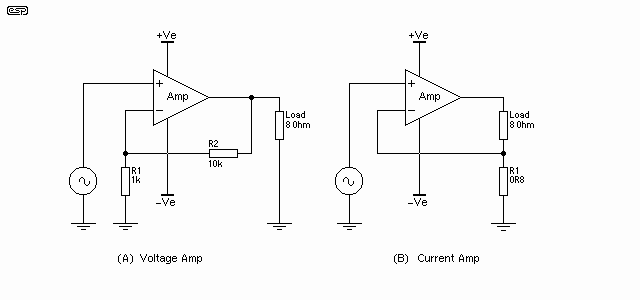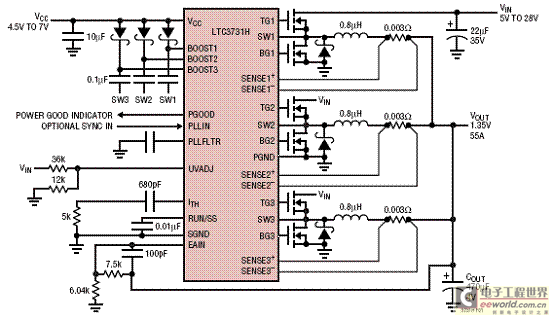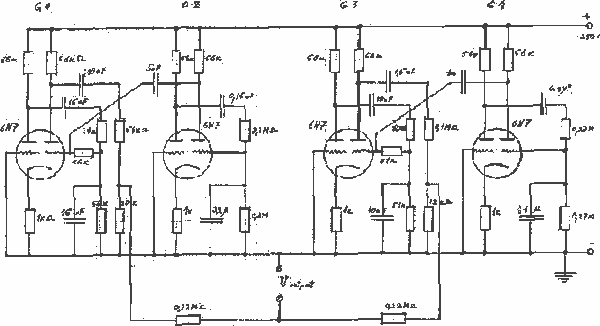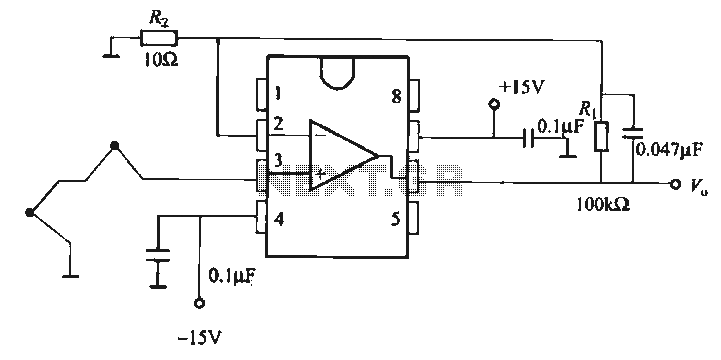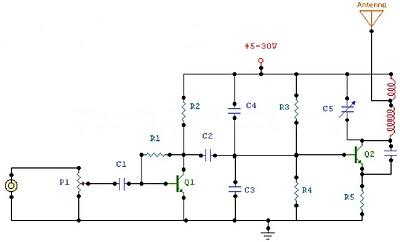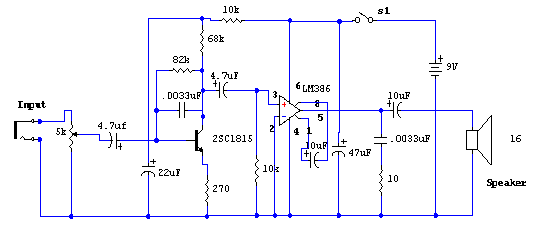
20 Watt Power Amplifier
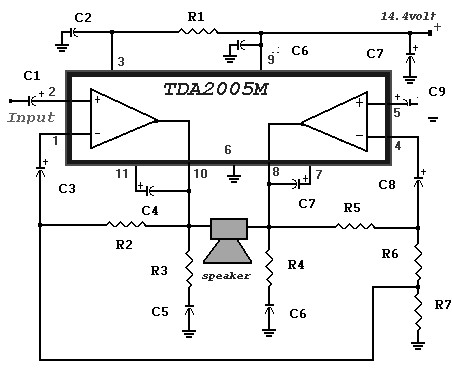
A 20 Watt car power amplifier circuit diagram based on the TDA 2005. The TDA 2005 IC is specifically designed for power boosting applications in car audio systems. This IC includes protection against short circuits and overheating. The circuit utilizes a bridge configuration to deliver 20W of output power with 2-ohm speakers. Additionally, there is a car stereo amplifier circuit based on the TDA1553, which is a Class-B audio amplifier. This simple circuit consists only of the IC and a capacitor. The 20W car audio amplifier described here provides a booster that allows for an increase in power output from the car stereo to a maximum of 20 watts. The input is connected to the output of the receiver, and the output is connected to the speaker, as shown in the car audio amplifier schematic. It is crucial to ensure that the speaker is not connected to the chassis (ground); otherwise, the integrated circuit IC1, a TDA2004, may be damaged.
The 20 Watt car power amplifier circuit utilizing the TDA 2005 is designed to enhance audio performance in automotive environments. The TDA 2005 IC is engineered for high-efficiency audio amplification, making it suitable for car audio systems where space and power efficiency are critical. This integrated circuit features built-in protection mechanisms, including short circuit and thermal overload protection, which safeguard the amplifier during operation.
The bridge configuration employed in this circuit allows for effective power delivery, maximizing the output to 20 watts when connected to 2-ohm speakers. This configuration is essential for achieving higher power levels without requiring additional components, simplifying the overall design while ensuring robust performance.
The additional circuit based on the TDA1553 further complements the audio amplification capabilities, functioning as a Class-B audio amplifier. The simplicity of this circuit, comprising primarily the IC and a capacitor, minimizes the complexity of the design, making it accessible for various applications in car audio systems.
In terms of connections, the input (IN) of the amplifier is linked to the output of the audio receiver, ensuring that the signal is properly amplified before reaching the output stage. The output (Uoutput) is then connected directly to the speaker. It is vital to maintain proper isolation between the speaker and the chassis ground to prevent potential damage to the TDA2004 integrated circuit. This precautionary measure is critical in ensuring the longevity and reliability of the amplifier circuit in automotive applications.20 Watt Car Power Amplifier circuit diagram bases TDA 2005. This TDA 2005 IC was designed specifically in car audio system for power boosting applications. This IC has a protection against short circuit and overheating. In the above circuit use a bridge configuration that will deliver 20W of output power with 2 ohm speakers. The scheme given here is a car stereo amplifier circuit can be used in That car or other vehicle. The circuit is based TDA1553, which is a Class-B audio amplifier. As you can see this circuit is very simple, consisting only of theICand thecapacitor6. Here is a circuit diagram of car stereo. This 20w car audio amplifier circuit described here offers a 20watt booster that will allow you to realize the power amplifier with which one can increase the power output from the carstereoup to20Wattsmaximum. The inputINis connected to theoutputof thereceiver, Uoutputis connectedto the speakeras shownoncaraudioamplifierscheme.
It is veryimportanttoensurethat thespeakerhas no connection tothe chassis(ground)ifnot, the integrated circuitIC1, aTDA2004will. 🔗 External reference
The 20 Watt car power amplifier circuit utilizing the TDA 2005 is designed to enhance audio performance in automotive environments. The TDA 2005 IC is engineered for high-efficiency audio amplification, making it suitable for car audio systems where space and power efficiency are critical. This integrated circuit features built-in protection mechanisms, including short circuit and thermal overload protection, which safeguard the amplifier during operation.
The bridge configuration employed in this circuit allows for effective power delivery, maximizing the output to 20 watts when connected to 2-ohm speakers. This configuration is essential for achieving higher power levels without requiring additional components, simplifying the overall design while ensuring robust performance.
The additional circuit based on the TDA1553 further complements the audio amplification capabilities, functioning as a Class-B audio amplifier. The simplicity of this circuit, comprising primarily the IC and a capacitor, minimizes the complexity of the design, making it accessible for various applications in car audio systems.
In terms of connections, the input (IN) of the amplifier is linked to the output of the audio receiver, ensuring that the signal is properly amplified before reaching the output stage. The output (Uoutput) is then connected directly to the speaker. It is vital to maintain proper isolation between the speaker and the chassis ground to prevent potential damage to the TDA2004 integrated circuit. This precautionary measure is critical in ensuring the longevity and reliability of the amplifier circuit in automotive applications.20 Watt Car Power Amplifier circuit diagram bases TDA 2005. This TDA 2005 IC was designed specifically in car audio system for power boosting applications. This IC has a protection against short circuit and overheating. In the above circuit use a bridge configuration that will deliver 20W of output power with 2 ohm speakers. The scheme given here is a car stereo amplifier circuit can be used in That car or other vehicle. The circuit is based TDA1553, which is a Class-B audio amplifier. As you can see this circuit is very simple, consisting only of theICand thecapacitor6. Here is a circuit diagram of car stereo. This 20w car audio amplifier circuit described here offers a 20watt booster that will allow you to realize the power amplifier with which one can increase the power output from the carstereoup to20Wattsmaximum. The inputINis connected to theoutputof thereceiver, Uoutputis connectedto the speakeras shownoncaraudioamplifierscheme.
It is veryimportanttoensurethat thespeakerhas no connection tothe chassis(ground)ifnot, the integrated circuitIC1, aTDA2004will. 🔗 External reference
